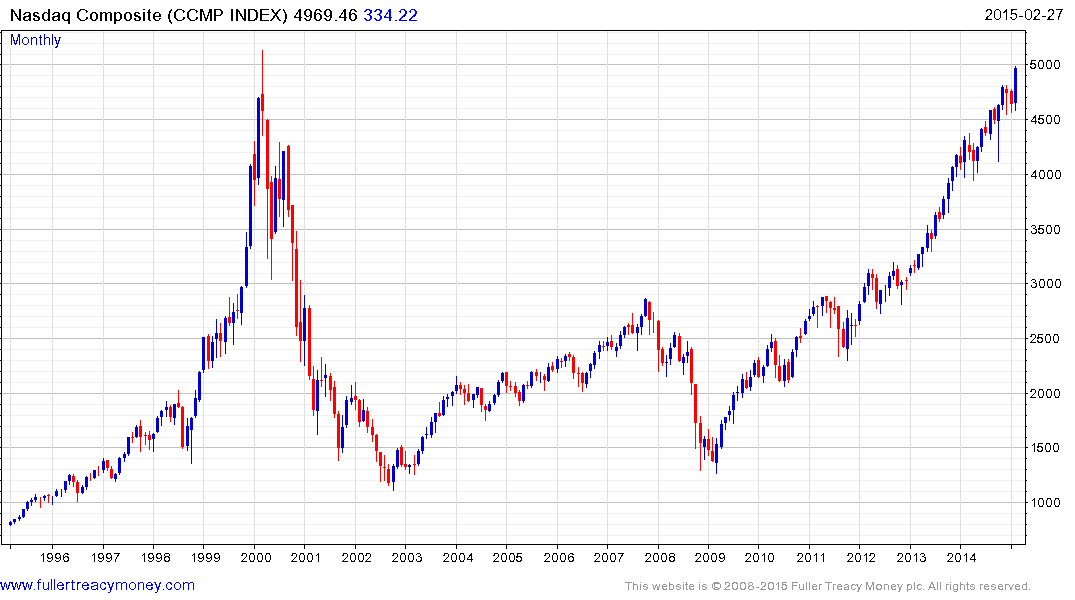Forget secular stagnation: America shows why the pessimists are wrong
Thanks to a subscriber for this article by Graham turner for City A.M. which may be of interest. Here is a section:
Contrary to the assertions of these pessimists, however, “productive” investment – notably in information technology – is rising strongly in the US. Higher investment is leading to more jobs. According to the Bureau of Labor Statistics, vacancies in professional and business services soared to a record 1.03m in December last year – an increase of 51.2 per cent over a year earlier. In total, US businesses created 3.04m jobs in 2014. The increase in private non-farm employment was the biggest for any year since 1997. The unemployment rate edged up to 5.7 per cent in January, but it has consistently fallen faster than the Fed – and most other economists – forecast. The jobless rate could well dip below 4 per cent over the course of this economic cycle.
The strong rise in investment has been concentrated in information technology. Spending on software is running at record levels in real terms and as a share of GDP. Firms are committing greater sums to research & development (R&D). Record profits are being recycled into higher share buybacks, but the increase in R&D also suggests that they are being used to drive up the potential growth path of the US economy.
None of this should be a surprise. The US has led the world in technology since the internet boom of the late 1990s, and the dip in technology spending following the credit crunch of 2008 was very short-lived. This partly reflects the limited reliance on bank funding for many companies operating in the technology sector.
?Critics cite the relatively slow growth of real GDP and the low rise in productivity to support their case for secular stagnation. Unemployment may have fallen, but economic growth in the US has not been above 3 per cent in any year since the recovery began.
One of the central topics at The Chart Seminar is that expectations for future potential decrease within a range. The simple reason is that we tend to base our assumptions on evidence and when the body of past evidence is based on a range we tend to predict that the situation will persist. As a result our actions become more conservative and patience deteriorates. This contributes to the formation of vacuums of supply above and demand below the congestion area which are the conditions that allow a breakout to occur. In Crowd Money I devoted a chapter to the discussion of how price affects sentiment and vice versa and how this contributes to the development of long-term cycles.
When we look at the USA, which has experienced two crashes since the turn of the century and where many people feel the recovery has left them behind, there is a temptation to conclude that the situation will persist indefinitely. However that would be to ignore some of the long-term bullish factors that are rapidly falling into place. Low energy prices and abundant supply cannot be overstated. A wide technological advantage in the key energy, healthcare and advanced tools sectors is driving productivity growth after what has been a very difficult decade. There is widespread disbelief that the future will be better than the past and yet the evidence from history if one steps outside the cyclicality of markets confirms this view.

While one might have an optimistic outlook on future potential, the consistency of trends is paramount when considering the management of one’s investment. The Nasdaq Composite is within 50 points of its year 2000 peak near the psychological 5000 level. Some consolidation in this area can be expected despite the fact that the Index is considerably better supported by valuations on this occasion.
Back to top


